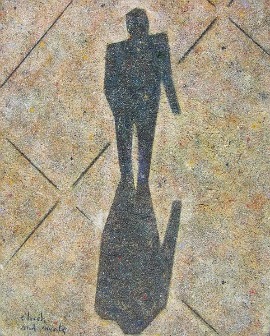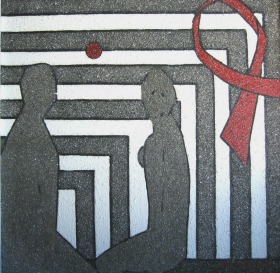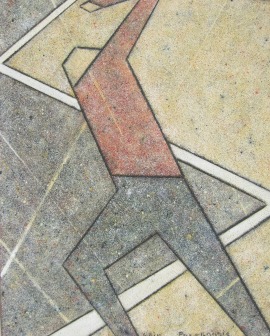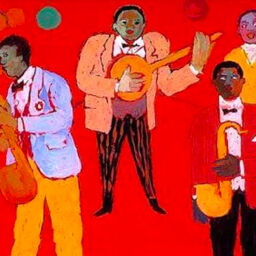
Coaching Abrasive Leaders
Pam Rechel, September 8, 2016

When psychological type is part of the coaching process, it supplies a new way of communicating without condemnation, thereby facilitating win-win outcomes for problematic leaders, their subordinates, and their organizations. Two case studies below, one of an ENTP executive and another describing an INTP executive, illustrate how type training can not only persuade abrasive leaders to change but can also give them tools for maintaining the changes.
The most common abrasive behaviors in leaders (Crawshaw, 2007) are communication issues, which are especially amenable to change with the use of type training:
- Over-control: “Just do it.” No discussion or input allowed.
- Threats: “Heads are going to roll.” Promise of an exaggerated punishment, such as a threat to sack the whole team.
- Public humiliation: Public displays of anger, such as yelling, belittling, or making someone look bad in front of others.
- Condescension: Presumption that everyone else is stupid (e.g., “treats us like 3rd-graders”), and the leader is the only person who knows anything.
- Overreaction: Impatient, “comes unglued,” and quick to convict, such that the smallest thing can trigger an angry response.
- All the “un’s”: Unsupportive, undependable, unthinking, unpredictable, uncaring, etc.
What motivates such asocial behavior? Abrasive executives need to protect their competence. In addition, abrasive leaders might think appearing competent themselves is the only way to get others to be competent. Knowledge of psychological type not only neutralizes the triggers for these behaviors but also trains leaders in new communication skills, showing them how to tailor communication to the type of the recipient. A knowledgeable coach and type trainer models the use of type techniques during the coaching sessions, demonstrating that persuasion can be achieved in other ways than abrasive behavior.
Challenges in Coaching Abrasive Leaders
The Boss Whispering® process of coaching abrasive leaders teaches clients how to change their coworkers’ negative perceptions that have resulted from their abrasive behaviors. The MBTI® and the Type Verifier (from TypeCoach.com) give abrasive leaders additional tools for developing empathy. The main challenges of coaching abrasive executives are making them aware, getting them to care, and helping them cultivate empathy.
Awareness of Impact: The biggest challenge is raising their awareness: Abrasive leaders are as blind as bats. They don’t see the impact of their behavior. They don’t see that their behavior is related to how others respond (or don’t respond) to their directives. They don’t see and thus don’t understand. Their blindness prevents them from having insight about their impact (Crawshaw, 2007).
Desire to Change: The second biggest challenge is to get them to want to change their behavior. They likely have been highly successful in the past; otherwise, the company would not bother to hire a coach to work with them. They probably see their problem behaviors as effective strategies to maintain their dominance. The coach must confront the underlying fear, the fear of appearing incompetent.
Retraining Learned Behavior: Abrasive leaders choose aggression instead of an empathic process of determining the cause of the other person’s behavior because this response is all they know. They may have learned it from a parent or grandparent (“My father accused me of not working hard enough; then he yelled at me”) or in a first job (e.g., in the military or working for a difficult boss who motivated by intimidation) or even from their current boss who belittles everyone on the team. The coach must help the abrasive leader unlearn these habits.
Desire for Immediate Results: When the previous challenges have been addressed, the final challenge arises. Once these typically bright, driven, competence-craving executives see the impact of their behavior, they want tools and strategies to change the perceptions that others have of them, and they want them immediately. This teachable moment is when personality type comes in.
The Initial Interview
A major part of the coaching process begins with HR and upper management (the executive’s superiors) speaking with the abrasive individual in an intervention consultation. The coach helps prepare HR and upper management for the conversation. Without HR and upper management clearly stating the issues and consequences, the coaching will not be effective. During the intervention consultation, the HR representative and/or upper management might say to the abrasive employee, “Mary, you’re a valuable employee here. We’d like you to stay and be successful. And there’s a behavior that has to change: [Here the behavior is described generally but not euphemistically.] We are prepared to offer you coaching if you would like it. The behavior change is not optional. Your choice about whether to take the coaching is optional. If the behavior doesn’t change, here is a likely consequence: [A specific consequence is verbally identified here.]” The consequence should be something tangible but need not always be the prospect of being fired. It may be something like, “Your career advancement will be limited.” This can be effective because abrasive leaders often measure their competence by external indicators. One abrasive coachee was told, “You won’t be eligible for a bonus this year,” which was the worst thing he could imagine. When he heard that, he suddenly “cared.”
360 Degree Feedback

The coach pays attention to and records verbatim the actual words used by the interviewees as “comments.” If three people say, “Joe talks down to us and raises his voice,” the comment is repeated in the report three times in the exact words used so the impact is clear when the Feedback Summary is delivered.
The Feedback Summary can be brutal. The coach organizes the comments into themes that prioritize the behaviors needing to change. Examples of such themes from actual 360’s include: Aggressive and Blames Others; Escalates and Inflames Issues vs. Solving Them; Condescending and Belittling; Environment of Fear, Punishment, and Disrespect; Domineering; Unprofessional Behavior and Language; Plays Favorites; etc. Without the 360 to provide evidence of poor behavior, the abrasive coaching approach is unlikely to be successful.
Typically, an abrasive leader will deny, resist, and perhaps attack the process. After reviewing the feedback summary, one client said, “Why won’t anyone tell me these things? I’m like the emperor with no clothes.” The coach replied, “Let’s go to the data where it says that employees are afraid of you.” The data speaks more powerfully than any coach can. It is more persuasive than discussion.
Training New Behaviors
Success with abrasive leaders requires that coaches stay true to the Socratic method of questioning that encourages the individual to bring up real life examples. These experiences then provide the practice field for developing new skills and awareness. Once the Feedback Summary has been presented and thoroughly examined, coachees are usually eager to have as many tools, skills, and procedures as possible to manage their interactions with others. This is where understanding personality type can help them to boost their skills. One of their most powerful realizations is the discovery that not everyone is like them. The realization that there are sixteen different personality types is often profound. Abrasive behavior is almost always anchored in the assumption that “everyone needs to be treated this way to be effective.” Communication disconnects and interpersonal challenges are then assumed to have causes other than simple personality differences: “They’re stupid,” “They’re incompetent,” “They’re trying to undermine me,” etc. A basic understanding of personality type differences not only supplies other possible, more likely, and less threatening explanations but also reorients the coachee’s coping strategies toward trying to understand—toward empathy, rather than defense.
Part of the coaching process for abrasive employees is a meeting between the coachees and their superiors facilitated by the coach and held midway through the process. In this meeting, the coachees report on what they learned in the 360, what they are working on to address the problems, and where they need help/support from their superior. The purpose of this meeting is twofold: First, it ensures that the coachee will be held accountable for her behavioral changes. Second, it ensures that the coachee’s superiors remain engaged with the process after the coaching is complete. Discussing one’s development with one’s boss can be a powerful experience. This discussion is especially powerful for abrasive leaders because it provides an opportunity for them to demonstrate their newly developed interpersonal skills.
Pulse Check
Toward the end of the coaching process (four or five months in), the coach has a fifteen-minute confidential phone conversation with all of the people who were interviewed earlier for the 360 Feedback. They have an opportunity to comment on anything that has changed and what work still needs to be done. This communication typically results in positive comments about the changes that have occurred and also gives clear direction for the work remaining. A Pulse Check Feedback Summary is prepared by the coach and shared with the coachee.
End of the Process
The coach and coachee work on a Sustainability Plan that confirms that the coachee knows how to gather feedback, monitor his or her own stress and reactive states, and continue to practice using the tools. The coaching process typically ends within six or seven months.
Case Study #1: ENTP Healthcare Executive
This executive managed a department of 160 people and was told that she would not be eligible for a bonus that year. Her relationships with her team members (direct reports) and the number of complaints about her behavior needed to improve. The comments from her Feedback Summary included:
- Comes across as physically intimidating due to raising her voice and being abrupt
- Makes statements that appear to threaten people’s jobs
- Berates or criticizes staff and managers in public
- Controls almost every decision and communication within the department

She also realized that her direct reports were not developing their problem-solving skills because they just came to her for the answers. One outcome of the type discussions was that she set a goal of having her direct reports increase their skills in critical thinking. In addition to the coaching process, she and the coach engaged in a consulting process to initiate a culture change that encouraged critical thinking in her department. They also held a retreat for all the managers and supervisors that included exercises focusing on personality differences and critical thinking skills.
One of the many reasons that type training works with abrasive leaders is that it is objective. For example, leaders with no previous exposure to type are helped by understanding that those who prefer Intuition are more likely to focus on the future whereas those who prefer Sensing are likely to focus on the present and their experience of the past. This learning enables coachees to modify their communication and problem-solving, adding to their competence. One result of this revelation was that the ENTP executive asked for coaching to develop some specific and practical ways that she could “bridge between Sensing and Intuition.”
Overall, the coaching and consulting process, including type-based training, in her words, “transformed me as a human and as a leader and saved my marriage.” Her team reported statistically significant improvements in their Work Health Scores (a measure of the team culture that has been shown to correlate with individual and team effectiveness). Her boss was pleased with the changes in her relationships and the teams.
Case Study #2: INTP Technology Executive
This executive was told that his career as a manager would be limited if his relationships with his peers and superiors did not improve and the “run-ins” with others did not subside. A direct quote from one of his superiors summed it up: “Career-wise, it’s not a good idea to throw your boss under the bus.”
In his 360 Feedback Summary, a number of themes were identified: Aggressive and Blames Others; Communicates with a Negative Tone, Awkwardly or Not at All; Escalates and Inflames Issues vs. Solving them; Works Against or Ignores Upper Management; Does Not Contribute in Meetings When Not in Charge. Some of the quotes pointed to an unwillingness to flex beyond his typological comfort zone: “He might ask folks individually, so expects that others would do the same instead of contributing in meetings,” and “When he finds someone that he’s comfortable with or who is similar to him, he does all his communicating with that person but am not sure that he takes the time/energy to communicate with all people.”

His new learning about psychological type dominated his presentation meeting to his superiors, the same people who had met with him for the initial intervention consultation. He spent the first part of the meeting describing his type preferences and how he thought his preferences had influenced him and how he had learned some strategies to be more effective considering his preferences. In particular, he said that he would ask for agendas ahead of meetings in order to be more prepared to speak in meetings and that he would be clearer when providing input after meetings. He also had a keen interest in learning how to listen to another person and put his agenda aside for a moment. Prior to learning about type, the importance of listening to acknowledge the contributions or questions of another was not valued because it did not seem logical. At this meeting, after he presented his preferences from his Type Verifier, one of his superiors said that she thought he was being underutilized in the department.
Summary
In each of these case studies, personal and interpersonal insights provided by the type model added a new way for the leader to see himself or herself and to understand the behaviors of others, and it gave each tools for recognizing different types and modifying behaviors to be more successful and competent. An understanding of personality type, in addition to being a powerful tool for coaching abrasive leaders, results in not just incremental improvements in behaviors and relationships but can, as demonstrated by these two case studies, transform work relationships and facilitate career success as well as improving life in general.
References
Crawshaw, L. (2007). Taming the abrasive manager: How to end unnecessary roughness in the workplace. San Francisco, CA: Jossey-Bass.
Images
Kyung Koo Kant, “Byungjanyun” (2011). Courtesy: Korean Art Museum Association.
Erik Pevernagie, “Out of control,” (1998); “Everybody has his story” (2000); “No monsters hide at this point” (2011); and “With confidence walking on the catwalk of life” (2000). Published with permission from the artist under the Creative Commons Attribution-Share Alike 4.0 International and 3.0 Unported licenses.



















So the first step in correcting abrasive behavior is to sit down and have an abrasive intervention with them, where I abrasively–as defined in the article of exaggerated punishment– threaten to terminate them if they don’t change.
Something not right about this.
Excellent article. I do believe, over many other models (DISC for example), the Myers-Briggs is an excellent model for coaching. As you say, it is more objective but also the nature of the model forces one to compare themselves to others. When this is done by a unique type (such as the INTP you describe) it is often a “the world suddenly makes sense” phenomenon and to a typical type, they finally understand those weird unique types. The team aspects of the MBTI are much more pronounced than the individual.
Thanks for sharing the two case studies. Well done – especially when the ENTP realized that folks don’t see what she sees. That is just the best insight for EN-P’s!
Wonderful article!! I’m forwarding the link to several executive coaches I know as I’m sure they will also appreciate it.